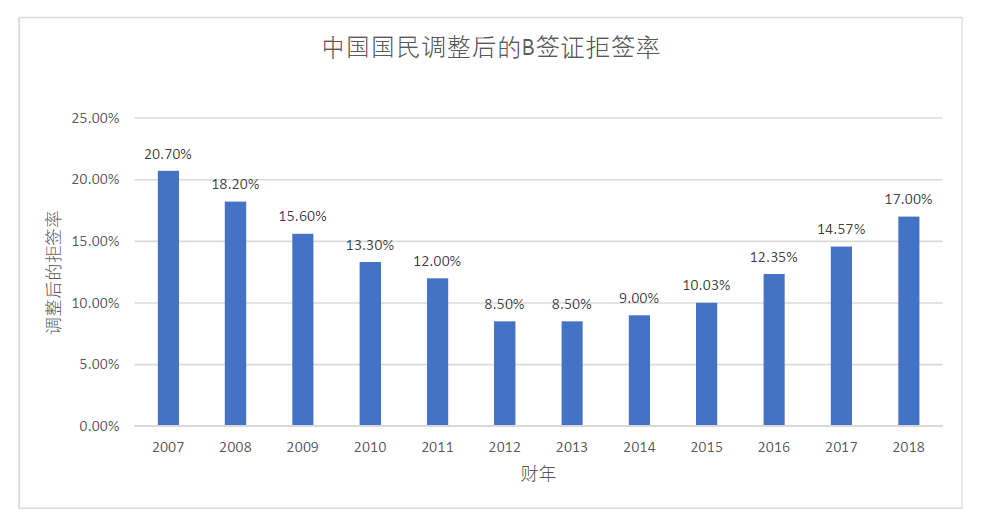The rate of B (tourist and business visitor) visas refusals for Chinese nationals have been climbing since 2013 and stands at 17% as of 2018, according to the U.S. State Department.
The State Department doesn’t comment on the reasons. I would speculate that key reasons may include:
- The availability of 10-year, multiple-entry B visas since 2015 means that there are fewer applications for visa renewals (which are generally considered low-risk) and more first-time applicants.
- Trump administration policies and rhetoric since 2017 have created an environment where more skeptical consular officers have felt freer to use their broad discretion to refuse visa applications.
- With the Great Recession disappearing in the rear view mirror, the strengthening U.S. economy and cooling China economy have quieted voices emphasizing the economic value to the U.S. of Chinese visitors. The clearest link between B visas and the economy was made by President Obama’s 2012 executive order on streamlining visitor visas:
The travel and tourism industry is one of our Nation’s leading service sectors and sources of exports. However, the U.S. market share of spending by international travelers fell from 17 percent to 11 percent of the global market from 2000 to 2010, more than a 30 percent decrease in our share of the global market. This decrease was due primarily to increased international competition, changing patterns in global development, and, to some degree, more stringent security requirements imposed after 2001. Given the importance of the travel and tourism industry to the U.S. economy and job creation, a coordinated policy, consistent with protecting our national security, is needed to support a prosperous and secure travel and tourism industry in the United States.
The adjusted visa refusal rate cited by the State Department is based on the worldwide number of Chinese nationals applying for B visas. The refusal rate takes into account only an applicant’s most recent application, not prior applications. The rate does not count initial decisions to deny a visa that have subsequently been overcome by the presentation of additional information or the completion of administrative processing by the State Department.
Source: U.S. Dep’t of State, Calculation of the Adjusted Refusal rate for Tourist and Business Travelers under the Guidelines for the Visa Waiver Program (last visited May 5, 2019).


Leave a Reply